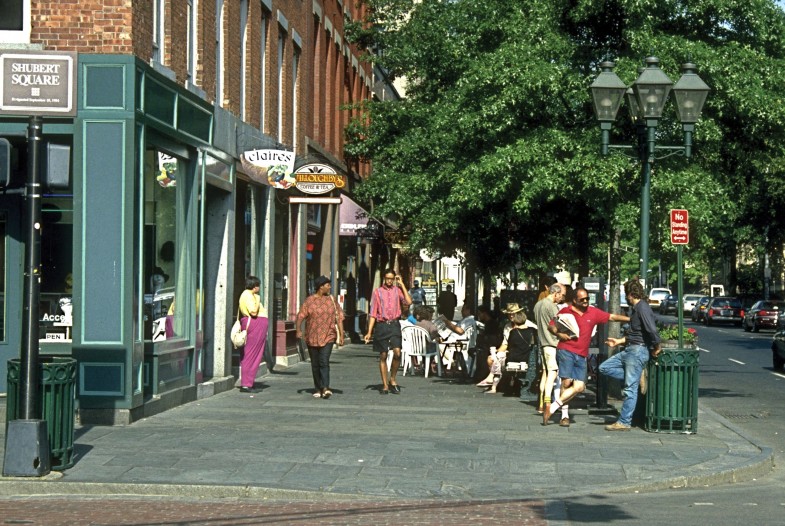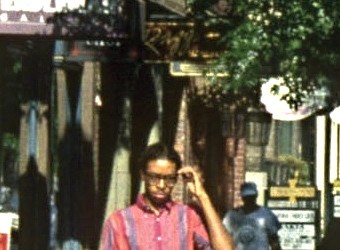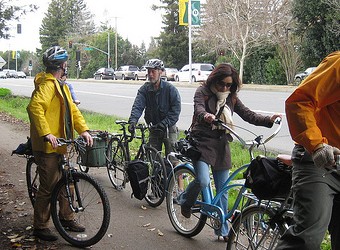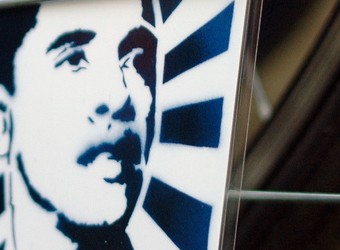It’s no coincidence that the words “commons” and “community” spring from the same linguistic ancestor—which some researchers trace back beyond Latin and Greek to “kommein,” a word that in Indo-European languages means “shared by all.”
Like air and water, our local communities are a form of the commons that sustain us every day. They are the places where our feet touch the ground, where we share lives in common with neighbors in the streets, parks, sidewalks, schoolyards, local business districts, libraries, social events and community organizations. The neighborhood, in fact, is the basic organizing principle of human civilization.
Last year I wrote the Great Neighborhood Book (together with Project Public Spaces) to draw attention to the importance of community life, even in our thoroughly modern era, and to offer fresh ideas on how to increase conviviality in our lives and strengthen valuable social bonds with neighbors. Since then almost everyone I meet asks: What’s your favorite neighborhood in the country? I never had a ready answer.
To settle the matter once and for all, I wrote up a list of all the wonderful neighborhoods I’ve had the pleasure of visiting. Then, with great deliberation, I began to cross off names until only Jacobsburg remained. It is, in my opinion, is the Great American Neighborhood.
To keep the suspense going, I will let you figure out the surprising city where Jacobsburg is located. But here are the things I love about it.
Jacobsburg grew up slowly in a variety of architectural styles between 1890, when streetcars first reached this wooded spot along the river, and 1920, when the boom in automobile sales opened up distant suburban tracts for development. Buses now ply streets where rails once ran, but the corner business districts that popped up to serve trolley riders are still the heart of the community. Butcher shops and haberdasheries, however, have now given way to ethnic eateries and vintage clothing shops.
One of the traits I most admire about Jacobsburg is a knack for being quaintly old-fashioned and au courant cosmopolitan at the same time. At one of my favorite street corners in the world, 19th St. and Holly Avenue, a delicatessen run by an old guy named Rocco and his son Gus looks out across the intersection at a high-fashion coffeeshop with fair trade beans from 14 countries and the best selection of design magazines this side of Tokyo, and Krazy Kat Komics, a used and rare comic book store. Within a few steps you’ll come across a Reconstructionist synagogue, the largest fan belt dealer in the state, an old Carnegie library, a Caribbean seafood restaurant once written up in Food + Wine magazine and a laundromat made famous in an R&B song.
Years ago, the neighborhood was an Eastern European enclave with a sprinkling of Jamaicans who first came to the area as farm laborers during World War II. Today it is a veritable United Nations, thanks in part to the nearby university whose diverse student body keeps the streets lively all day and most of the night.
What do I like most about Jacobsburg? Well, I could mention plentiful trees shading the sidewalks or the pleasing sequence of three-and four-story buildings with front stoops where people sit out to socialize on warm evenings. Then there’s Riverwood park (which everyone says was designed by Frederick Law Olmsted, but wasn’t) with a swan pond, skateboard ramps, a weekend farmers’ market, summer band concerts and a café with better pastry than you’ll find in Copenhagen.
And how could I ignore the invincible spirit of neighborliness, apparent even to a casual visitor? Current residents explain that the neighborhood set aside its own ethnic tensions in the 1960s and came together to fight a freeway that would have essentially leveled the place. That sense of civic engagement endures to this day. The local business association sponsors an annual Spring Festival with a 30-foot maypole in the playground of St. Stanislaus School. Meanwhile a VFW Post, a commedia dell’Arte theatre troupe, a Southern Baptist congregation, a Mexican motorcycle club and a gay men’s chorus are among the dozens of local organizations that collaborate to raise money for the neighborhood food shelf.
But if forced to name one thing that makes this neighborhood so great, I would have to say it’s the streetlife. People come from all over town, and increasingly other states, to browse shops, dine in restaurants, drink beer, tour art galleries, see shows at the clubs, but most of all to simply be part of the crowd strolling up and down the sidewalks.
This popularity means the streets carry a lot of traffic in both cars and buses, but not at the expense of pedestrians. Careful attention has been paid to make walking a pleasurable activity. The sidewalks are wide enough to function almost as town squares, so you’ll find outdoor cafes, whimsical sculpture, flower patches, buskers and plenty of benches to sit down for a conversation.
One last thing I want to mention about Jacobsburg is the wealth of great pubs, which live up to an older sense of the word — meaning “public house” — rather than the current definition as “a place to drink.” Families encompassing three generations can be found in the booths at corner taverns like Rufus & Bessie’s or The White Eagle eating supper right alongside laborers celebrating quitting time and students commemorating the end of another day of classes. The great majority of these pubs share a virtue that English novelist George Orwell lauded as “quiet enough to talk,” in a 1946 essay about his favorite London pub, The Moon Under Water.
But The Moon Under the Water existed only in Orwell’s imagination, a composite of the qualities he found in great pubs across England. And the same is true of Jacobsburg, a neighborhood that I dreamed up out of wonderful experiences I’ve had on the streets of many American cities. I named it after urbanist visionary Jane Jacobs. Holly Avenue honors William H. (Holly) Whyte, the far-sighted champion of public spaces. (The photo you see here is actually Chapel Street in New Haven, Connecticut—an urban success on its own, since 95 percent of the area’s buildings were vacant in the early 1980s.)
But rather than being uselessly Utopian, I see Jacobsburg as the future that’s possible for neighborhoods everywhere as people work to create great commons and great communities.






